What Is Acne? What Is Acne Vulgaris?
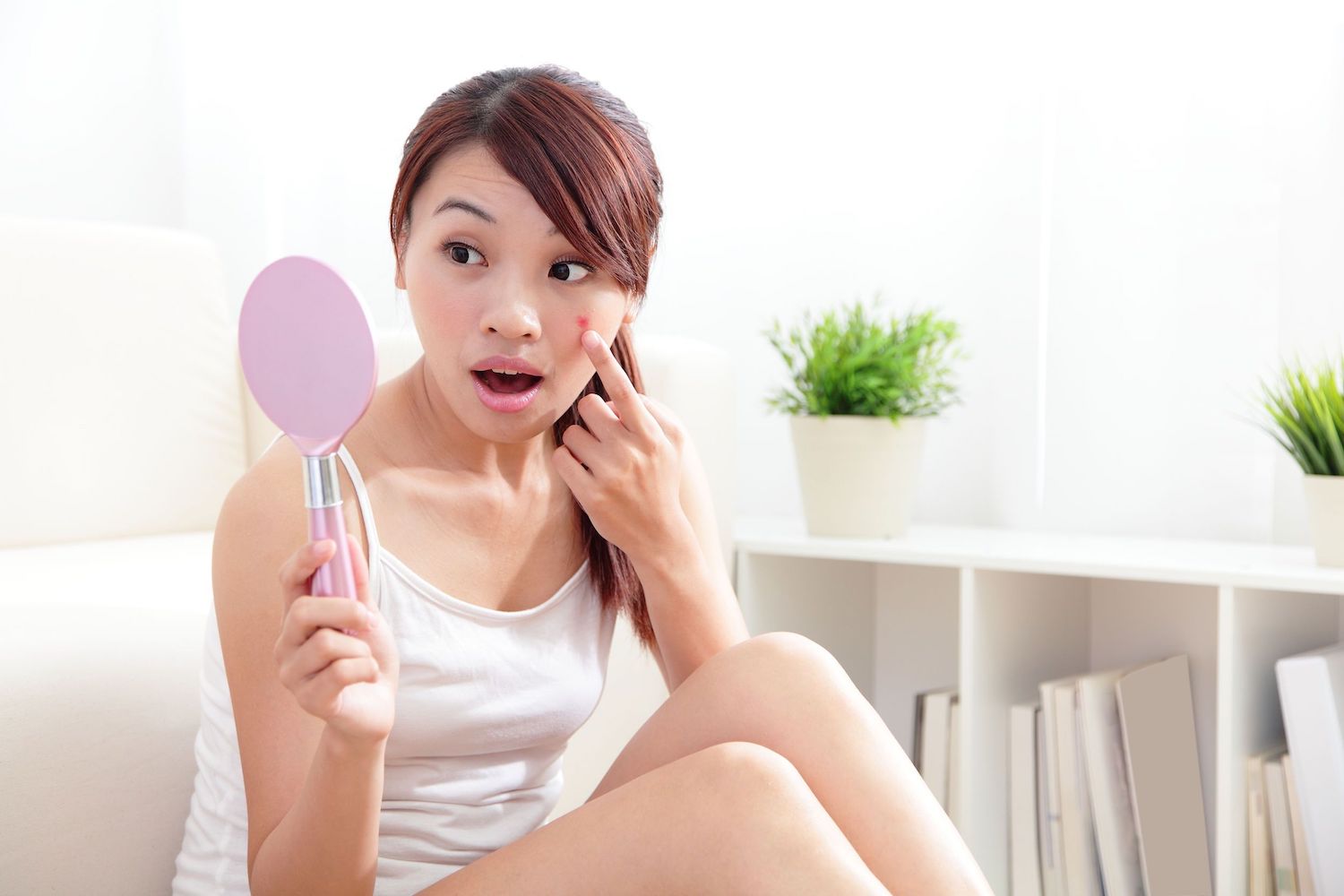
How Long Does Acne Last?
Acne is most prevalent during puberty, and it is often mild, tending not to last far beyond adolescence. In some cases, acne can last years beyond puberty; while untreated acne lasts around five years before dissipating, some deal with acne well into adulthood.
Acne FAQ
What Causes Acne?
Acne breakouts can be attributed to a variety of causes, and this skin ailment can show up on the face, back, neck, and chest. It’s also common to experience acne on the scalp, upper arms, and shoulders, but many may deal with pimples on various places including the buttocks and legs. This skin condition can be painful, irritating, and cause social insecurities. There is good news, however: acne is treatable.
What is Acne? Is Acne a Disease?
Acne, known medically as Acne Vulgaris, is a skin disease characterized by bumps and lesions on the surface and beneath the skin. This skin disease is caused by an excess of sebum, the oily substance produced by glands found at the base of hair follicles. When these glands produce too much sebum, the follicles become plugged with dead skin cells, debris, and P. acnes bacteria, resulting in pimples and inflammation.
Is Acne Permanent?
In the majority of cases, acne is not permanent. However, untreated acne can result in permanent consequences, including scarring. Cystic acne is the most common cause of permanent acne scars. While acne may not be permanent, it’s important to seek treatment and preventive care to avoid further damage.
The Biology Behind a Breakout
The definition of acne (medically known as Acne Vulgaris) is a skin disease characterized by clogged hair follicles—pores filled with excess oil, bacteria (Propionibacterium acnes, or P. acnes), and dead skin particles that become blocked and inflamed.
Pores are tiny holes in the surface of your skin that are connected to oil glands hidden beneath the skin. Our skin cells are consistently regenerating, sloughing off and revealing fresh skin every thirty days. Should these dead cells combine with oil, they become sticky and can trap bacteria and oil, clogging up your pores.
To keep your skin soft and healthy, your glands produce an oily substance called sebum. The sebaceous lipids in this substance are crucial for waterproofing and lubricating our skin and hair. These secretions are also essential for thermoregulatory processes; when we’re in the heat, sebum helps our bodies delay dehydration. When we’re in colder conditions, our sebaceous secretions help our skin better repel rain. Sebum forms a barrier to help keep microbes out, protecting your skin. However, while sebum can play an important role, the overproduction of this substance can lead directly to a host of skin conditions, including acne.
Our pores are connected to oil glands by a canal called a follicle. In these follicles, sebum carries dead skin cells and bacteria to the surface of the skin. However, if the sebum is trapped under the skin, it can clump together with the hair and skin cells gathered in the follicle. Should this happen, this clumping forms a plug. As the bacteria, skin, and sebum continue to build and press against the skin, your body sends red and white blood cells to the site, resulting in swelling and inflammation. If the bacteria remains trapped, a pimple will form. Integrate healthy skin care tips to reduce and prevent the emergence of blemishes.
An Acne Diagnosis
Most people can self-diagnose mild acne, which can be treated at home using over-the-counter products and medications like bioClarity. However, if you’re experiencing severe acne, a dermatologist’s help may be required. When you schedule a consultation with a doctor about acne, they will perform a physical exam and ask you about your medical history. Doctors will also ask female patients about their menstrual cycles to determine any outlying causes. Generally, there aren’t any special tests to diagnose acne, but they may be used to rule out other medical issues.
Inflammatory Acne versus Non-Inflammatory Acne
Acne is generally divided into two types: non-inflammatory acne and inflammatory acne.

Non-inflammatory acne refers to pores that have been blocked with oil, generally whiteheads and blackheads, also known as open and closed comedones, respectively. Usually blackheads and whiteheads come from dead skin cells and oil trapped within your pores.
Inflammatory acne refers to pores that have become clogged and infected with bacteria. These pimples turn into papules, which are pimples that don’t contain pus. They may also turn into pustules, pimples with pus, or cysts, which are inflammatory nodules. The skin surrounding these pimples is usually red and swollen, and can become very painful.
Acne generally affects the areas of skin that are densely populated with sebaceous follicles, which means the face, and upper part of the back (commonly referred to as bacne or back acne) and chest, but it can be found in other areas of the body.
Dermatological Classifications
Dermatologists use a four classification system when diagnosing acne.
Grade IThis is the mildest classification of acne, and an individual may experience blackheads, whiteheads or minor pimples, medically referred to as milia. Generally, Grade I acne does not have inflammation, and can be cleared with over-the-counter treatments. This type of acne generally shows up on the forehead and nose in adolescence, with an absence of inflammation. Some adults may also experience this type of acne in the form of blackheads on the nose or forehead.
Grade IIThis is moderate acne, and it affects individuals with a larger number of blackheads and whiteheads on the skin. There may be numerous papules and pustules, and the skin will experience breakouts more frequently. Generally, Grade II acne can be treated with over-the-counter treatments, but if symptoms don’t clear up after eight weeks, it may be wise to see a doctor.
Grade IIIThis grade can refer to moderate to severe acne that features a heavy amount of inflammation in comparison to Grade II. There may be nodules present, and if this is the case, it’s important to seek the advice of a dermatologist.
Grade IVThis is the most severe classification of acne. Those diagnosed with Grade IV will likely have skin that displays numerous nodules, cysts, and pustules. They may also have a large amount of blackheads and whiteheads across the skin, and this classification tends to affect more than the face. This severity of this acne requires the help of a dermatologist for treatment. Grades III and IV can be painful.
The higher the grade, the higher the chance of pain and permanent scarring, so it’s essential to determine the right course of treatment for acne as soon as possible.
Various Skin Conditions Can Mimic Acne

It’s important to receive a doctor’s diagnosis when it comes to severe acne concerns, as there are many skin conditions that mimic the appearance of acne that might require different treatment. ScienceDirect.com outlines some of the skin conditions that might be mistaken for acne vulgaris.
RosaceaCommonly mistaken as acne, rosacea is a very different skin ailment. Rosacea causes rose colored papules that are dome shaped, without comedones. The skin may become coarser, and the vessels may become more pronounced as time goes on, and the effects of rosacea are more noticeable after consumption of hot drinks and spicy foods, emotion, or skin exposure to heat.
FolliculitisThis condition occurs when hair follicles become inflamed and is usually caused by a fungal or bacterial infection. At first, these inflamed follicles look like small red bumps or whiteheads, but the infection can expand and transform into a sore. While this condition is relatively benign, it can be uncomfortable, and it’s important to seek treatment to avoid serious skin damage.
Basal Cell CarcinomaThis skin cancer can closely resemble pimples, and is commonly found on the face. It appears as a shiny red bump that may bleed or scab and will last for more than several months.
Keratosis PilarisThis common skin condition arises when keratin builds up. Keratin is the protective protein responsible for hair and nail growth, but a build-up of this protein can create small, rough bumps on the skin as hair follicles become plugged.
What is Acne Vulgaris?
Acne Vulgaris is characterized by clogged and inflamed pilosebaceous units. A pilosebaceous unit is the combination of a hair follicle and its accompanying sebaceous gland. When the sebaceous gland produces an excess of sebum, the oily substance can easily clog up the pilosebaceous unit. The lesions created from this blockage can range from blackheads and whiteheads to painful cysts and nodules. Acne Vulgaris most commonly affects the face, but can be found on the back, neck, shoulders, chest in certain acne patients. From non-inflammatory lesions to painful cysts, Acne Vulgaris can present in a variety of ways. Open comedones, or blackheads, occur when the pore is open to the air, and the contents of the blockage oxidize. Closed comedones, including whiteheads, pimples, and pustules, are closed by a layer of skin. Unlike acne fulminans, acne vulgaris is not associated with systemic symptoms including fever.
What Are Acne Scars?
Preventing and treating scars requires understanding of scar formation. What are acne scars? They are most often the result of an inflamed acne lesion, usually a pustule, papule, or cyst. Inflamed acne lesions occur when pores become clogged with excess sebum, dead skin cells, and debris. Unlike non-inflammatory blemishes, these blockages are infected with bacteria. As the pore swells from bacteria-fighting inflammation, it can cause a rupture in the follicle’s wall. If the rupture happens close to the skin’s surface, the lesion generally heals quickly. However, deep ruptures of the skin cell’s wall that occur beneath the surface of the skin can cause permanent scarring. After the rupture, the infected blockage spills out into the dermis, destroying any healthy skin tissue in its wake. When the wound begins healing, the body may produce an excess amount of collagen. This can create an area of raised tissue on the skin. The body may also lose tissue due to infection, causing a different type of acne scars. The amount of scarring present is dependent on the inflammation present. The more inflamed the lesions become, the more likely they are to develop scars.
The Causes of Acne
What is acne caused by? As discussed, most acne arises from overproduction of oils in the skin. These oils combine with bacteria and dead skin cells, resulting in blocked pores that form blackheads, whiteheads, and various other types of pimples. The reasons for this overproduction of sebum is varied so make sure you know how to figure out your skin type.
You can’t fight acne without understanding why you have it, and it’s important to recognize the factors that go into a breakout. So how exactly does acne form? Within hair follicles lay sebaceous glands. When these glands become overactive, the glands produce too much sebum, a waxy, oily substance that is meant to keep the skin naturally moisturized and supple. An excess of sebum can cause plugs within the follicles, mixing with dead skin cells, debris, and bacteria, resulting in the formation of a pimple. Those with frequent acne breakouts often have oily or combination skin types, which are characteristic of overactive sebaceous glands.
Acne breakouts can be affected by a variety of lifestyle habits. Improper cleansing routines, bad dietary habits, smoking and alcohol addiction, and more can go into the prevalence of pimples.
Puberty
The most common acne type develops during adolescence due to puberty. When a child reaches puberty, the brain will release a hormone called GnRH, which travels down to the pituitary gland and signals the release of two additional hormones, LH and follicle-stimulating hormone (FSH). The onset of these hormones sends a signal to the skin glands to produce more sebum, which leads to acne pimples.
Genetics
Hereditary factors can have a significant effect on the skin. If your parents have struggled with acne, you are genetically predisposed to do the same. Acne Einstein examined various studies about the effects of genetics on this common skin condition and found concrete evidence linking heredity and acne.
One study that examined over 1,500 set of twins found that “genes explained at least 81 percent of the difference in acne prevalence”. How exactly does this work? Genes can influence your skin sensitivity to hormones. If you have higher levels of androgen hormones, your skin will produce more sebum and experience a faster rate of skin cell growth, resulting in easily clogged pores. Your genes also influence how many anti-inflammatory chemicals your skin produces, along with the strength of your inflammatory response to bacteria.
Environmental Factors
The environment you live in can affect your skin. If you live in an air that’s heavily saturated with pollution, you may find your skin is clogged more easily, resulting in more frequent acne flares. Exposure to oil and grease in the workplace or at home can also have an effect on your acne. If you live in humid conditions, maintain a job which requires physical labor that causes excess sweating, or is extremely physically active, you might find your skin is affected.
Medical Conditions
Certain medical conditions can exacerbate or trigger acne flare-ups. For example, women with polycystic ovarian syndrome (PCOS) can experience breakouts. About 5 to 10 percent of women have PCOS, and if you’ve noticed excessive hair growth, irregular periods, and weight gain, along with noticeable acne breakouts, it’s a good idea to speak with your doctor.
Certain Medications
Your medicine cabinet could be having a huge effect on your skin. Certain medications contain steroids; these are commonly labeled with prednisone if it’s an ingestible medication, or labeled as cortisone or hydrocortisone if topical. Overuse of steroid medications results in higher levels of androgens, which can secrete more sebum and result in what’s known as “steroid acne”. Always check to see if acne is listed under adverse effects on any new medication. Contraceptives can also become a culprit of increased acne conditions. Anytime there’s a change in hormone levels within the body, this fluctuation can result in breakouts, and as contraceptives adjust hormones, it’s apt to affect your skin.
Acne Myths
As acne is such a prevalent problem, there is much research and debate on the best ways to treat it. Individuals asking themselves "what is acne?" are generally looking for the best answer. However, there has also been misinformation spread about preventing and treating acne. Here are 6 common myths regarding acne.

Myth #1: Drinking Water Can Clear Up Your Skin
While staying hydrated is important for holistic health, the claims that drinking more water can flush your skin of the acne-causing bacteria is baseless. While water can help your skin self-moisturize and clean your cells, it cannot affect oil production. As most acne stems from overproduction of sebum, it stands to reason that drinking more water would not affect the frequency of breakouts.
Myth #2: Lack of Hygiene Causes Acne
Acne isn’t caused by a buildup of dirt. Many mistakenly believe that a lack of hygiene can add to acne, and turn to cleansing the skin more often and more vigorously. Unfortunately, washing your face too much can actually lead to more breakouts, and scrubbing too aggressively can further irritate the skin and worsen the symptoms of acne.
Myth #3: Eating Greasy Foods Causes Acne
You’ve likely heard the warnings to stay away from chocolate and fast food if you’re looking to keep your skin clear as it can be considered one of the top acne mistakes. While a healthy diet is important, there’s no direct evidence that a diet filled with greasy foods can have a negative effect on your skin.
Myth #4: Makeup Causes Breakouts
Most cosmetic products will not cause irritation or clog your pores, so long as it’s cleaned off at the end of the day. Most modern makeup is composed of non-clogging ingredients, meaning it won’t directly lead to breakouts. It’s always a good idea to sample a new product on a small portion of skin to see how you react, but in general, makeup doesn’t necessarily cause acne.
Myth #5: Popping Pimples Helps

It can be extremely tempting to pop pustules in an attempt to alleviate inflammation. Unfortunately, when we try to pop a pimple, it can actually force bacteria and dead skin cells right back into the follicle. As ZME Science explains, this infected material can spread to the surrounding skin, and cause scarring, inflammation, infection, and pain. Popping one pimple may also lead to the spread of bacteria that spawns a new breakout, with the addition of more pimples.
Myth #6: Tanning Can Clear Your Skin
Many have come to believe that tanning—whether in the sun or in a tanning bed—can actually alleviate acne breakouts, but this is untrue. While a tan may temporarily hide acne marks and short bouts of sun exposure may sterilize acne bacteria temporarily, the sun will dry out the skin and leave it irritated. This can actually cause a higher amount of breakouts in the future. There has been no scientific proof that links sun exposure with effective acne prevention, and overexposure to UV rays can lead to irritation and skin cancer.
History of Acne Treatments
While acne is the most common skin condition in the United States, it is by no means a new problem and the treatments over the centuries have gone through quite the evolution. Our ancestors dealt with their fair share of skin ailments, and pimples and acne issues have been documented all the way back to the dawn of recorded history. The history of acne stretches back as far as the Ancient Egyptians who had their fair share of pharaohs that suffered from acne, and some reports maintain that there were acne scar treatment mixtures found in the tomb of King Tut. In Ancient Rome, those afflicted with acne would bathe in hot, sulfurous mineral water to treat their acne, and mentions of skin problems were found in “de Medicina” by Roman writer Celsus. The Romans were definitely onto something with their sulfur-centric treatment plans. Sulfur actually helped to decrease the number of bacteria and dehydrated the oils in the skin, leading to some improvements in the appearance of pimples.
Moving away from the history of acne, fast forward to the modern era. In the 1800s, dermatologists would prescribe Sulphur mixtures in acne treatment regimens. By the 1920s, benzoyl peroxide became popular; its ability to kill acne bacteria made it a viable treatment route, but some studies today advise against the use of treatments that utilize this ingredient. In the 1930s, acne flare-ups were referred to as “chastity pimples”, as it was widely believed that virgins suffered from the skin ailment because they were unable to rid their body of toxins. To alleviate acne in these years, doctors would prescribe laxatives and even radiation treatments.
In the 1950s, doctors began prescribing antibiotics for acne treatment, as its inflammatory effects could calm the redness and swelling of pimples. However, studies have shown that the resistance of bacteria P. acnes to commonly used antibiotics has been increasing through the years. In the 1980s, Accutane was introduced to the market. This form of vitamin A excelled at reducing oil secreted from glands, but this medication was found to lead to harsh side effects. In the 1990s, laser treatments made their way to the acne treatment scene, and were found to be effective; however, the high cost of these treatments is a huge deterrent for many people dealing with chronic acne.
Today, BioClarity is one of the first facial acne treatments to take a new approach to traditional acne remedies by incorporating a botanically-derived copper chlorophyllin compound that drives convincing acne results without drying or damaging skin.
The Physical Impact of Acne
Even after clearing up, the skin can face some long-term consequences due to breakouts. According to New Word Encyclopedia, when acne is left untreated or treated incorrectly, scars can appear on the skin, volcanic or inverted in shape. This is especially true for cases in which individuals attempt to “pop” their pimples, resulting in excessive aggravation on the skin. This is the result of dermis inflammation, and these scars are formed as the wound tries to heal itself. Acne scars can cause a permanent indentation on the skin’s surface, with deep pits marring otherwise smooth skin.
Those who suffer from acne may also experience pigmentation. These “pigmented” scars are often left behind from cystic or nodular acne. These can be treated and disappear after a few months or even years, but without treatment, these scars tend to be permanent.
Emotional Effects of Acne
Many of those who struggle with acne cite troubles with self-esteem. As teens are more apt to deal with acne issues, there can be profound psychological and social effects due to breakouts because of the early development of social skills and self-perception. Adolescence is a time when social habits, personalities, and confidence are honed, and during these years and beyond, physical appearance can have a large effect on self-perception of attractiveness and status. According to DermNet NX, negative impact on self-esteem can affect relationships and may contribute to social phobias.
A study done by the National Institute of Heath has shown that acne severity can significantly affect stress levels. As acne marks physical appearance and can stunt social skills and confidence, feelings of isolation and depression can be exacerbated. The potential emotional and mental consequences of acne make it essential to seek out acne treatment that works for your skin as soon as possible.
While there is no permanent cure for acne, with bioClarity, you can begin your treatment for acne in teens and young adults, helping your skin to clear up in no time.
Clearer skin in as little as two weeks.
3-step ritual with nutrient rich botanicals and the power of Floralux® to treat, soothe, and calm skin.
Learn More
Key Takeaways
- A buildup of excess oil, bacteria, and dead skin cells can result in blocked pores, which translates into pimples and acne breakouts.
- Acne can be caused by a multitude of causes, including hormonal changes, environment, and hereditary factors.
- There are numerous myths circulating about the causes of and cures for acne, many of which have proven to be unfounded and untrue.
- It’s essential to find the right acne treatment early to prevent permanent scarring and emotional effects.

Abby Vinas
Abby Vinas has long been an active member of the holistic health community, advocating in favor of its benefits to both our physical and emotional well-being. Her commitment to leading a healthy lifestyle has made her an authority on self-care practices. Abby is passionate about fitness, nutrition, and proper skincare, and is also an avid lover of avocado toast and dog-petting.
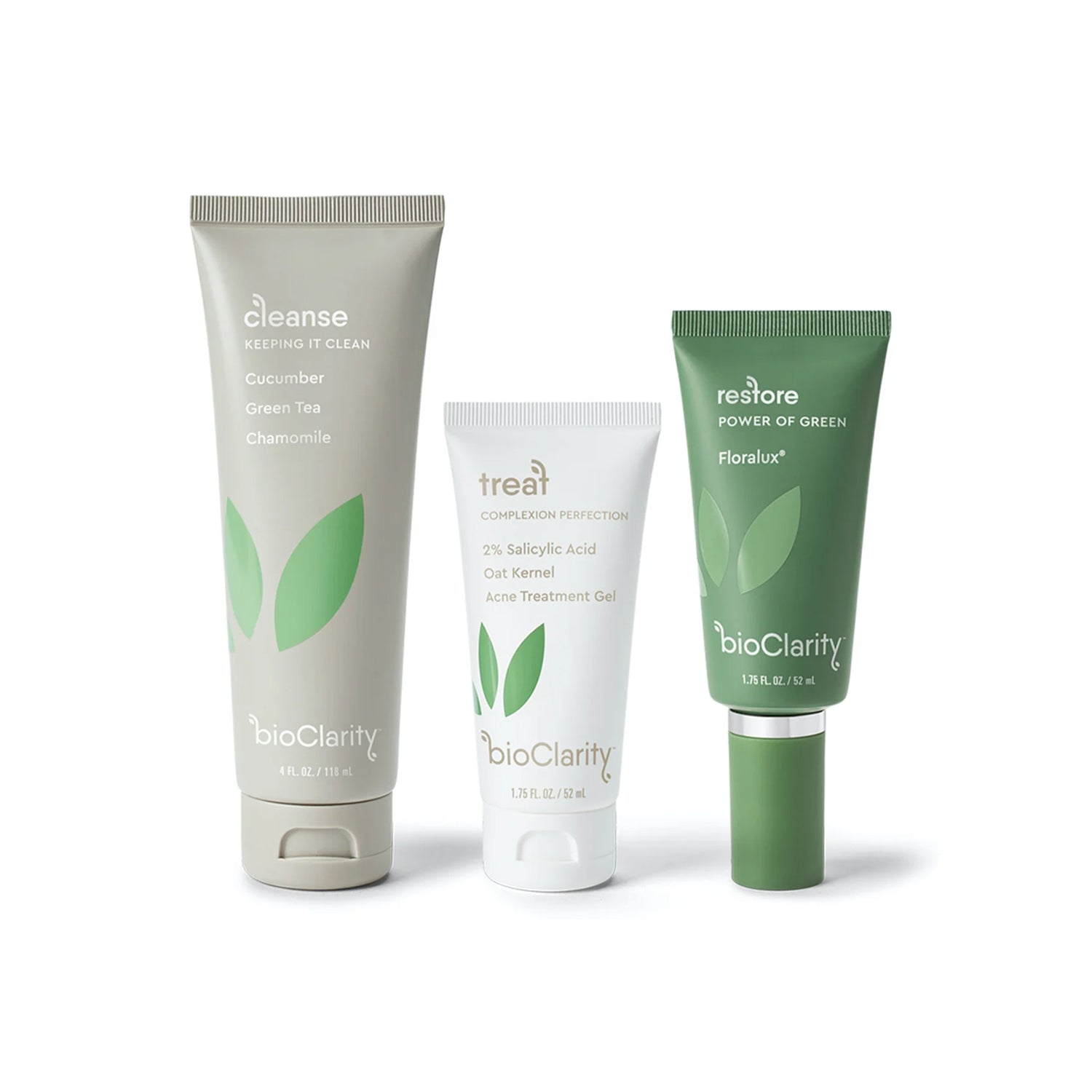
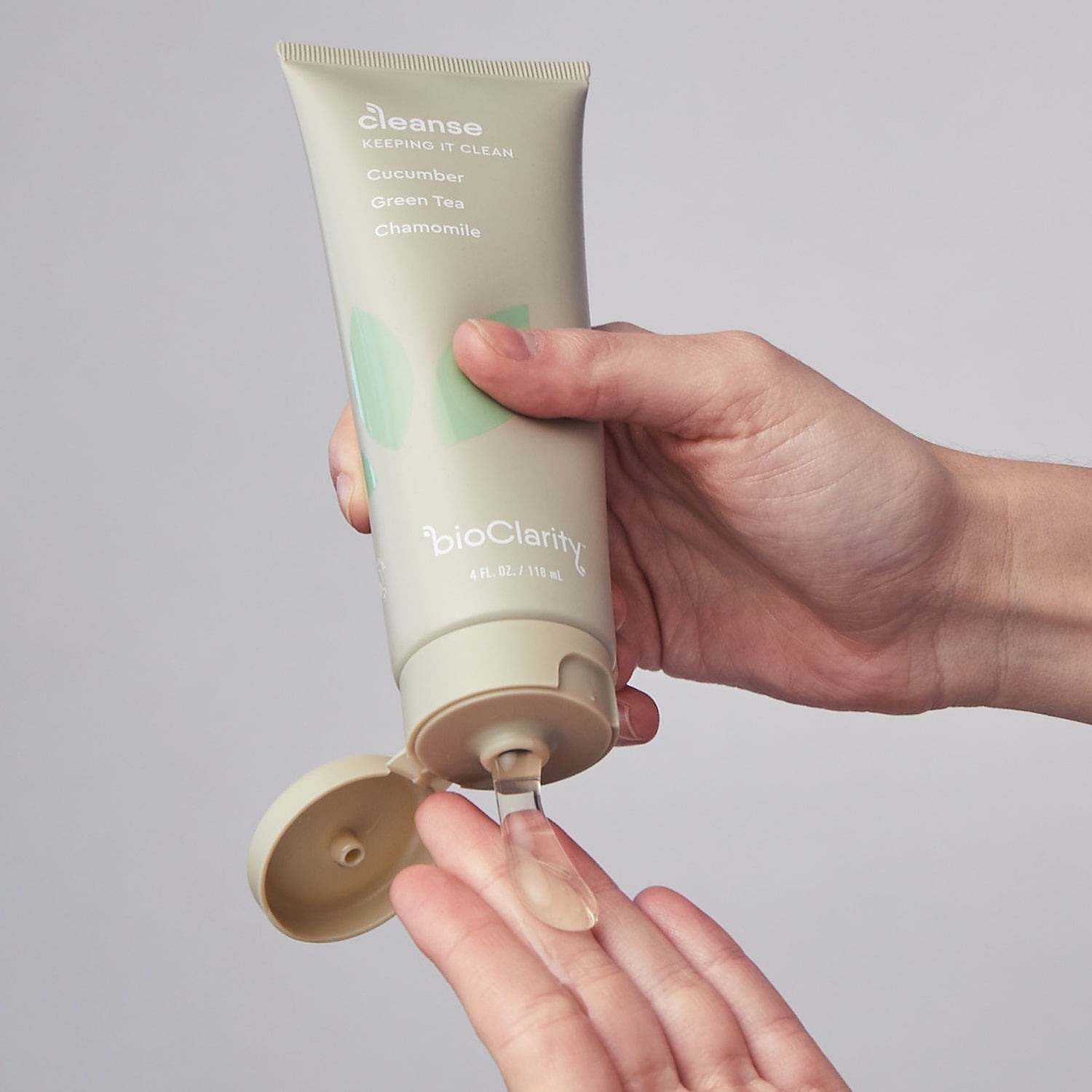
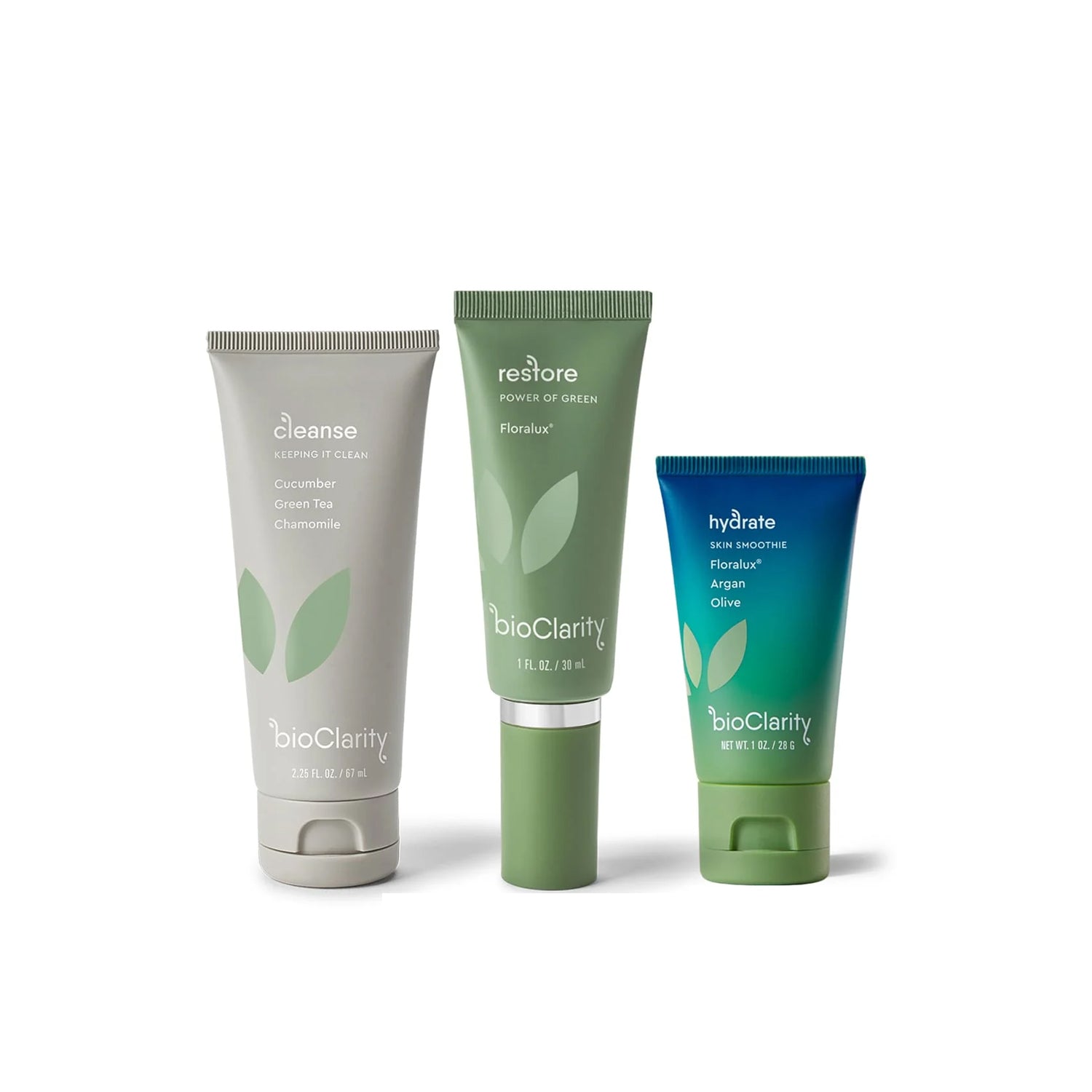
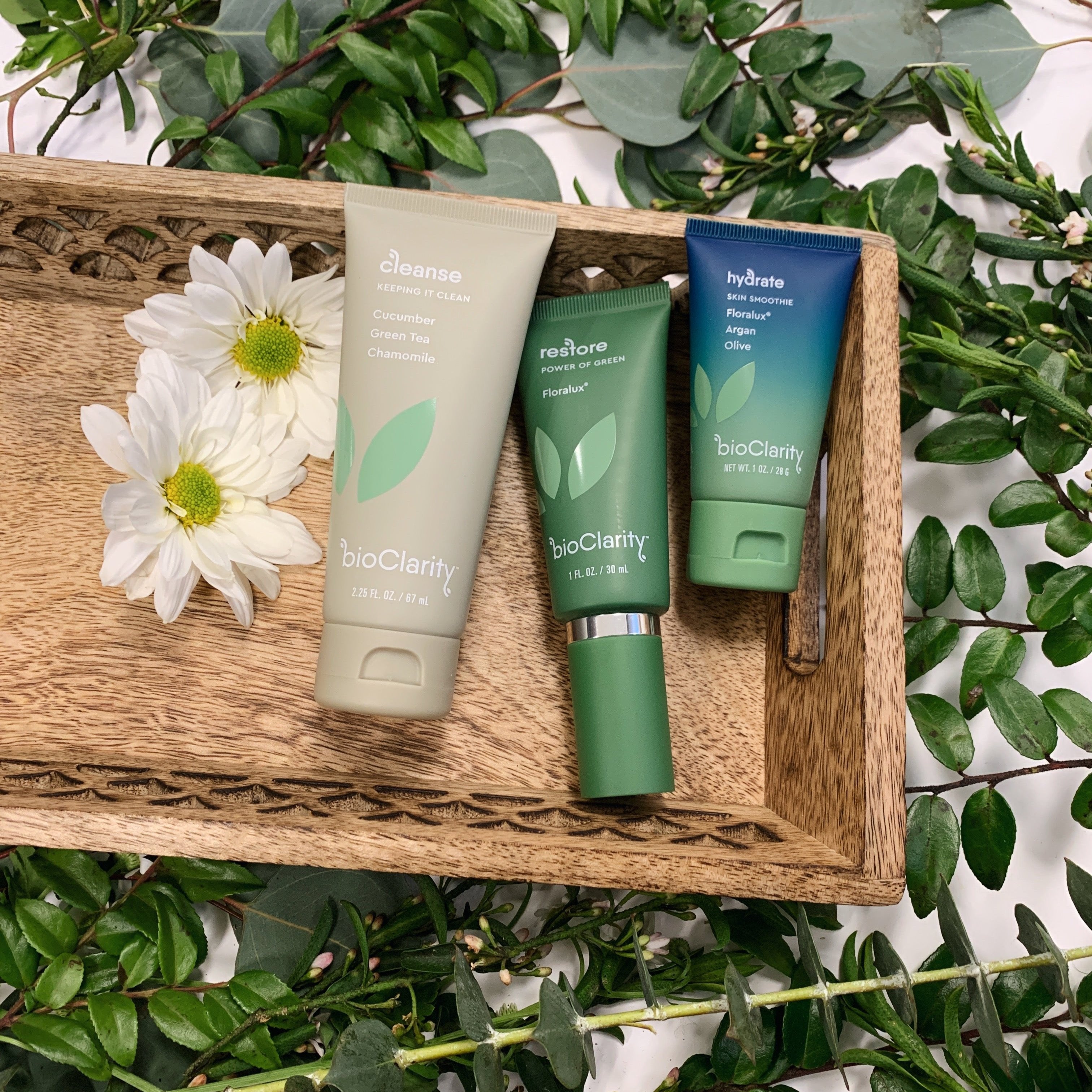
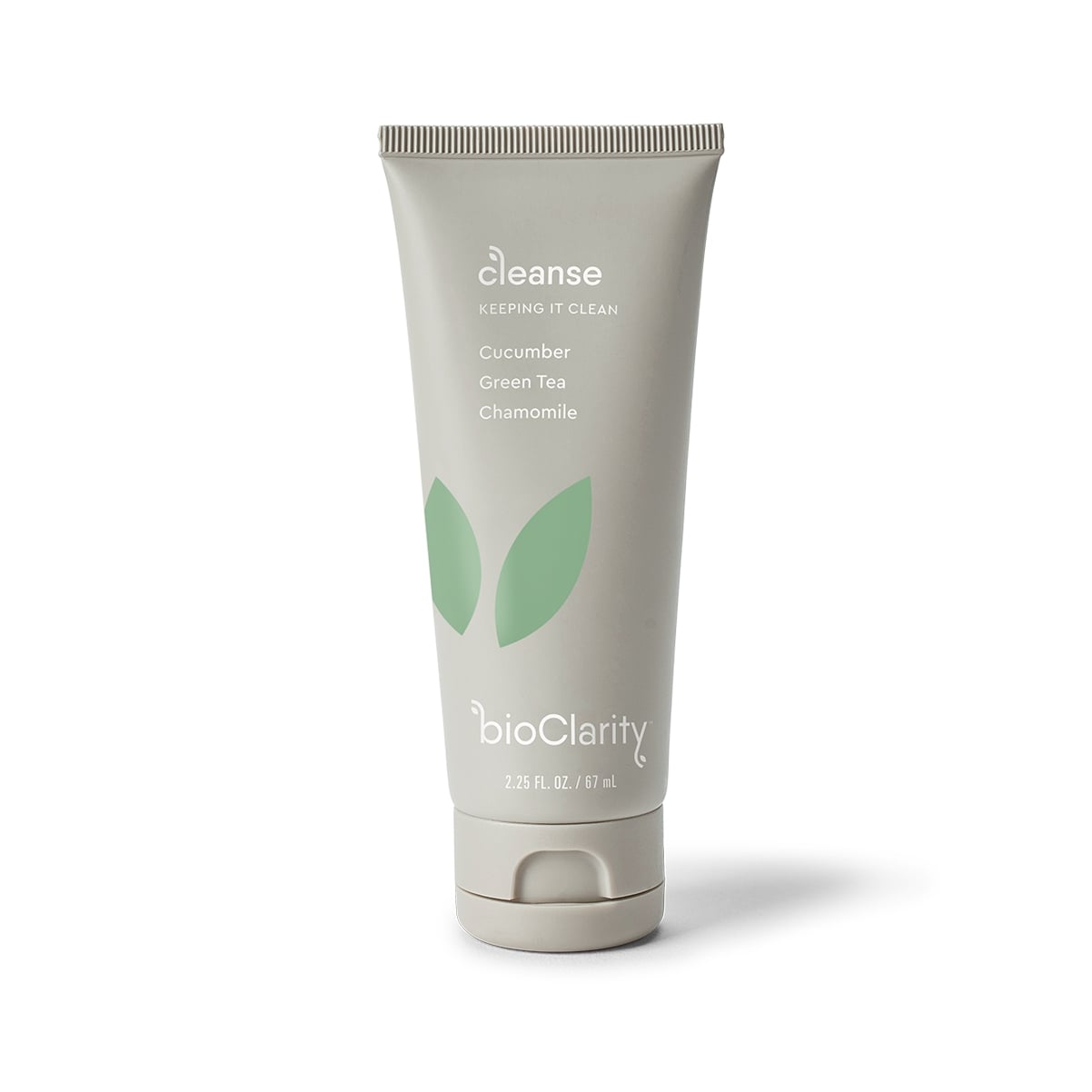
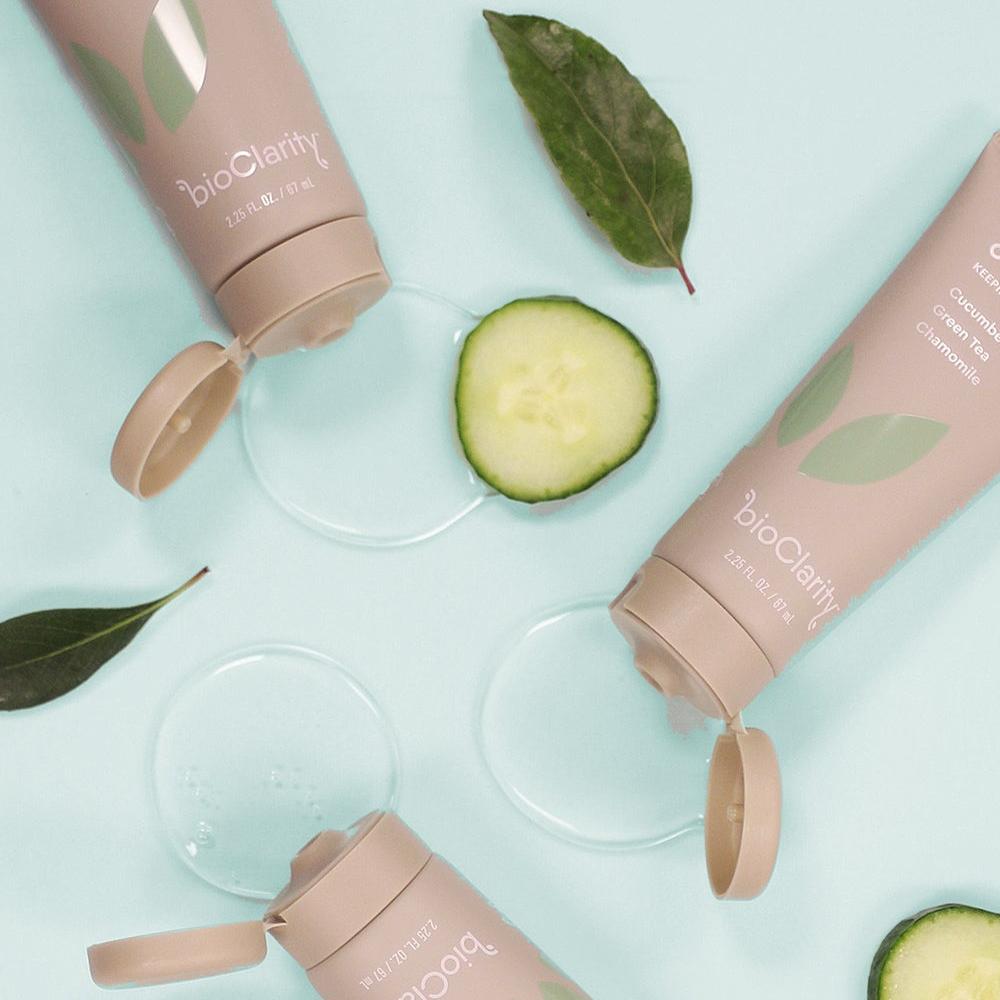

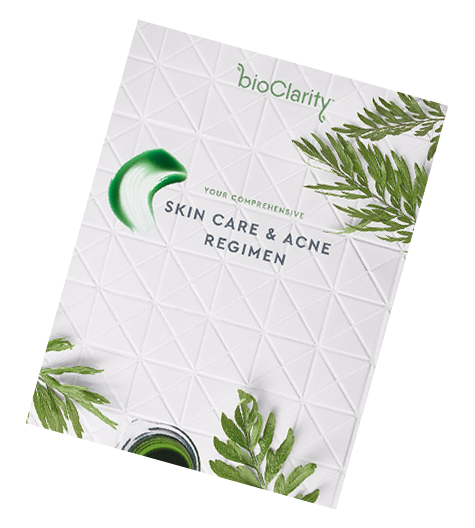


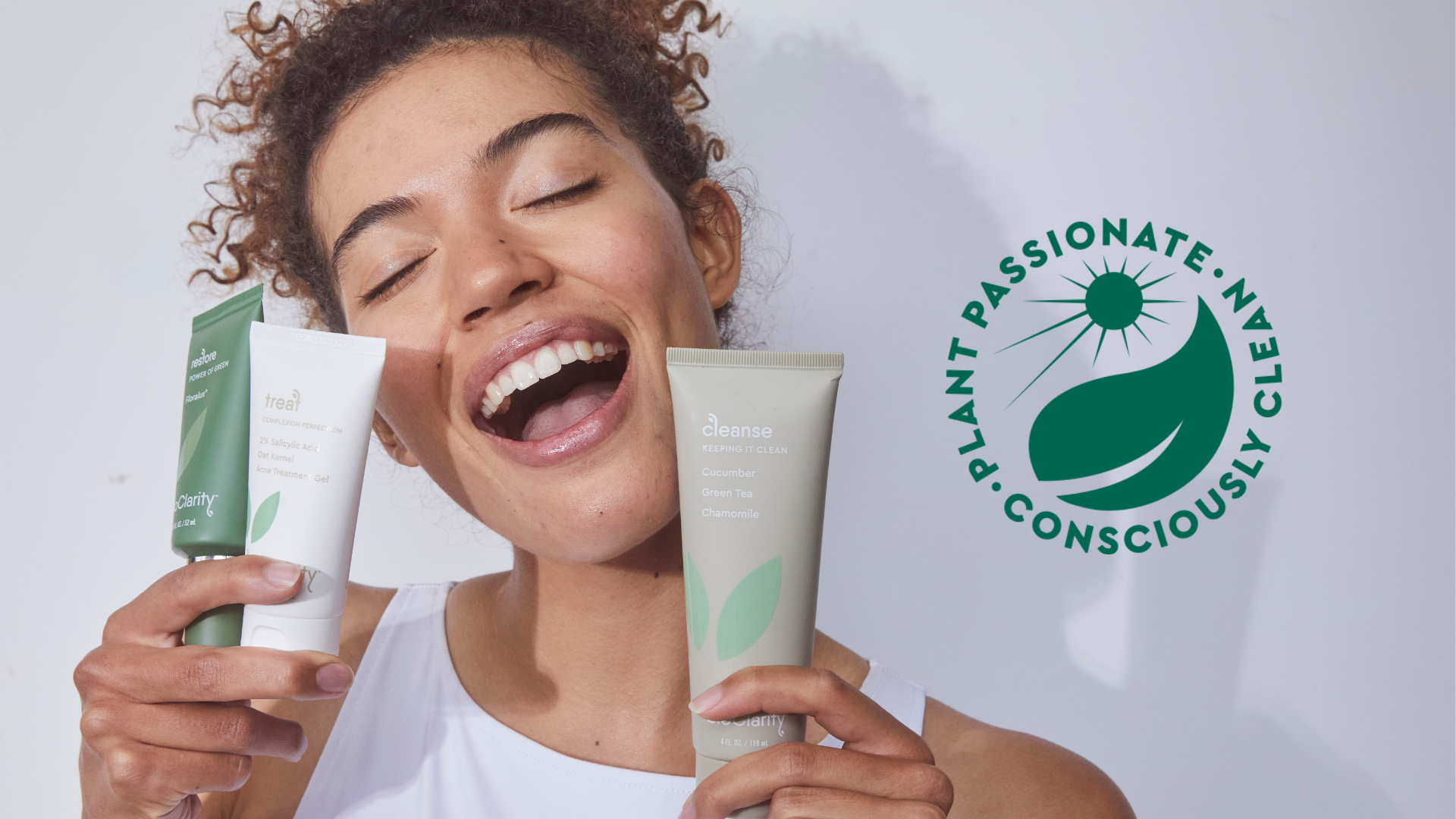
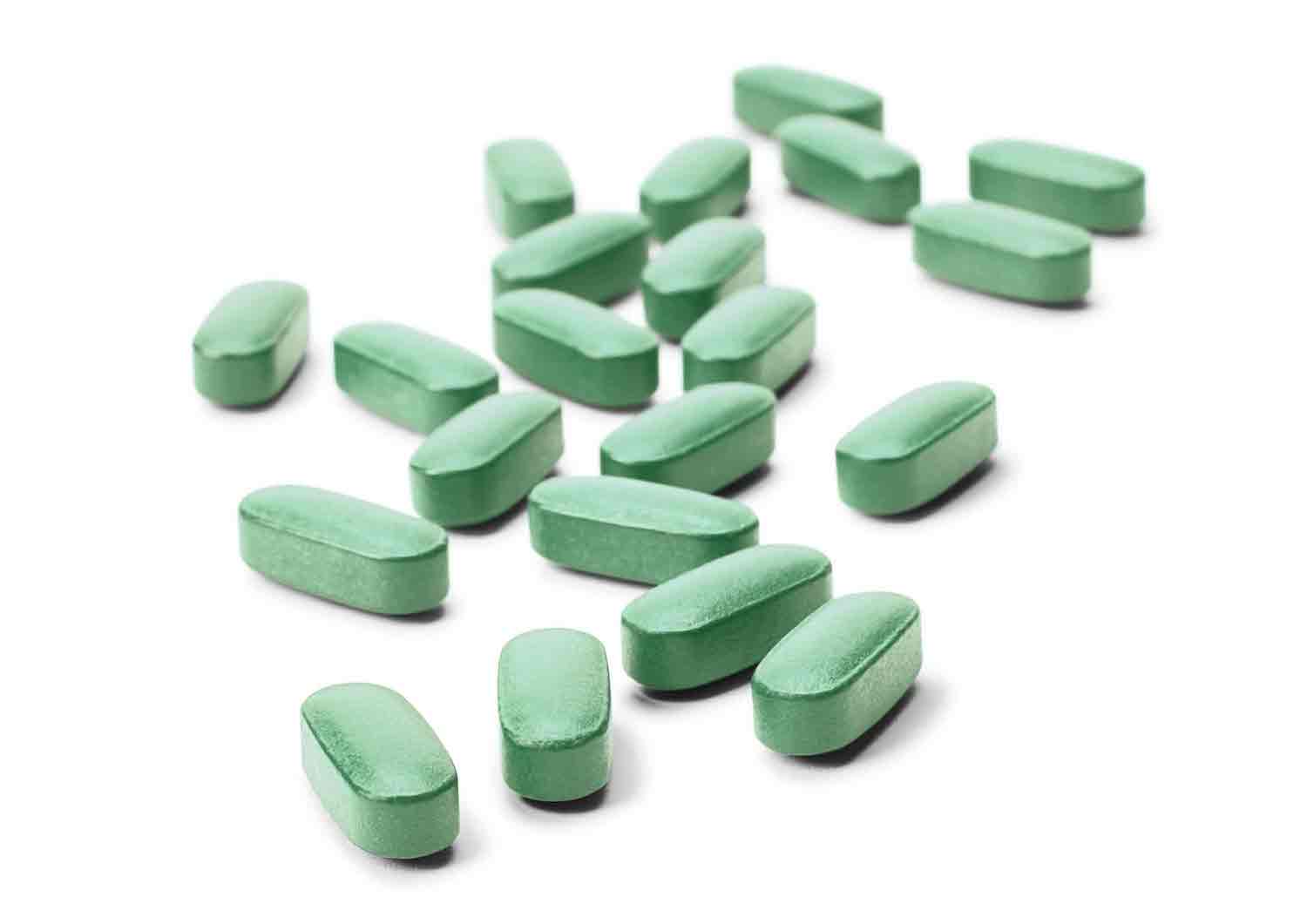
Comments